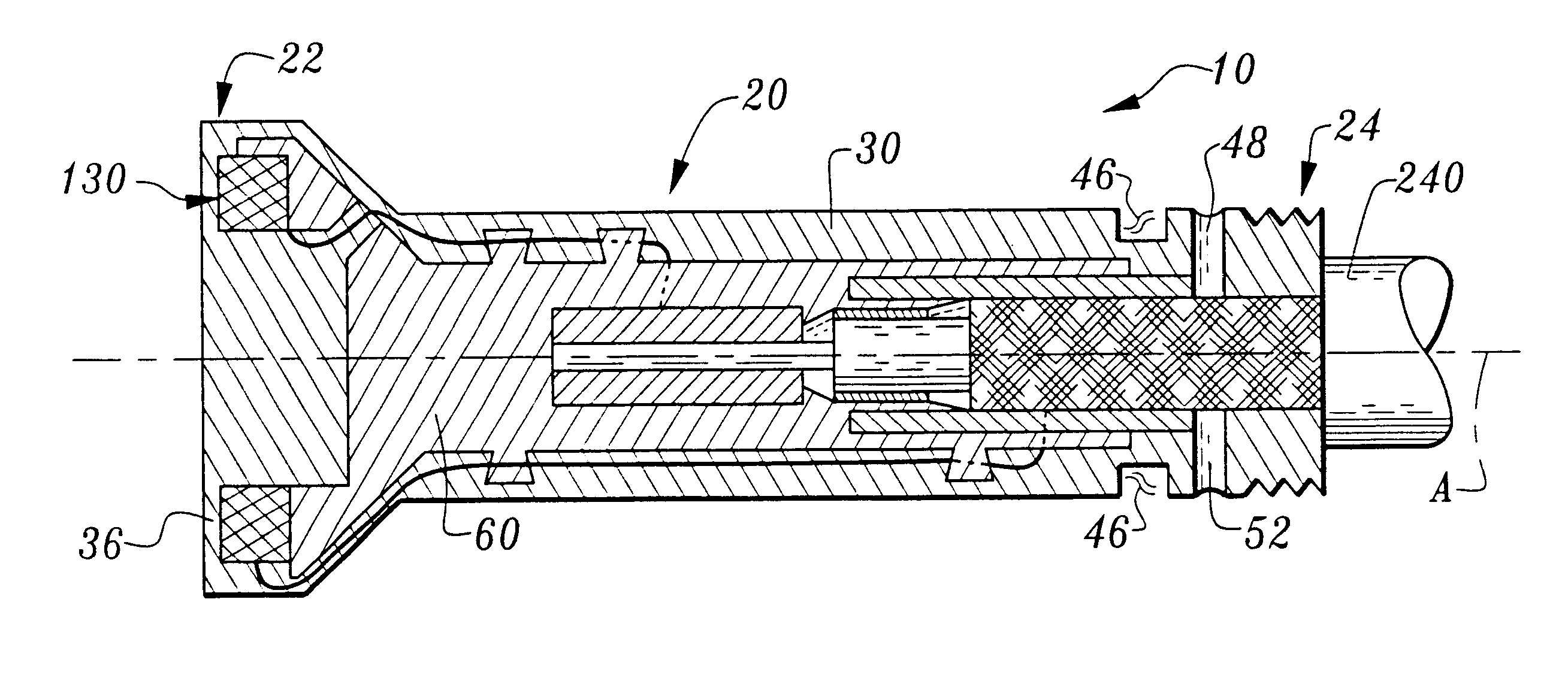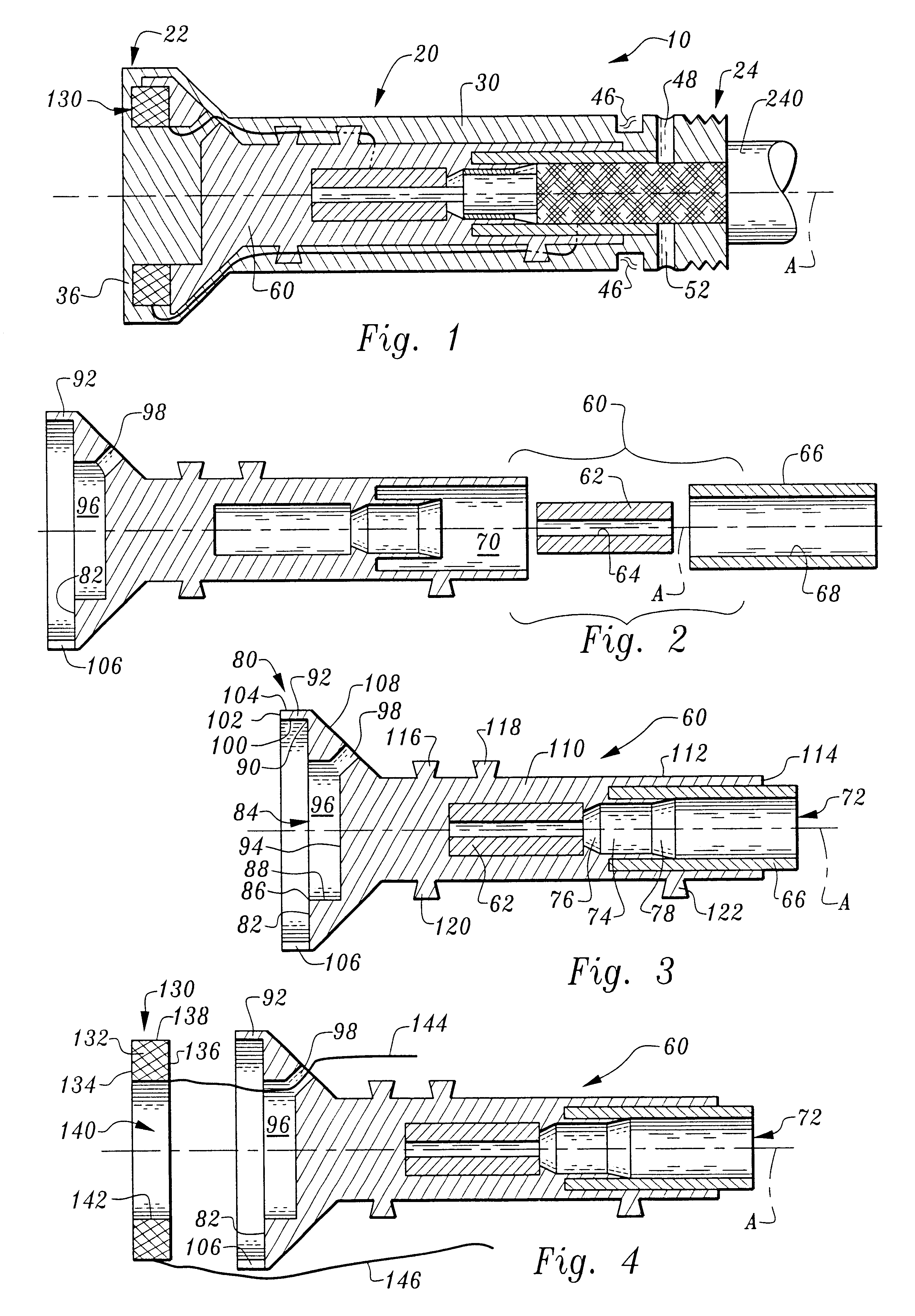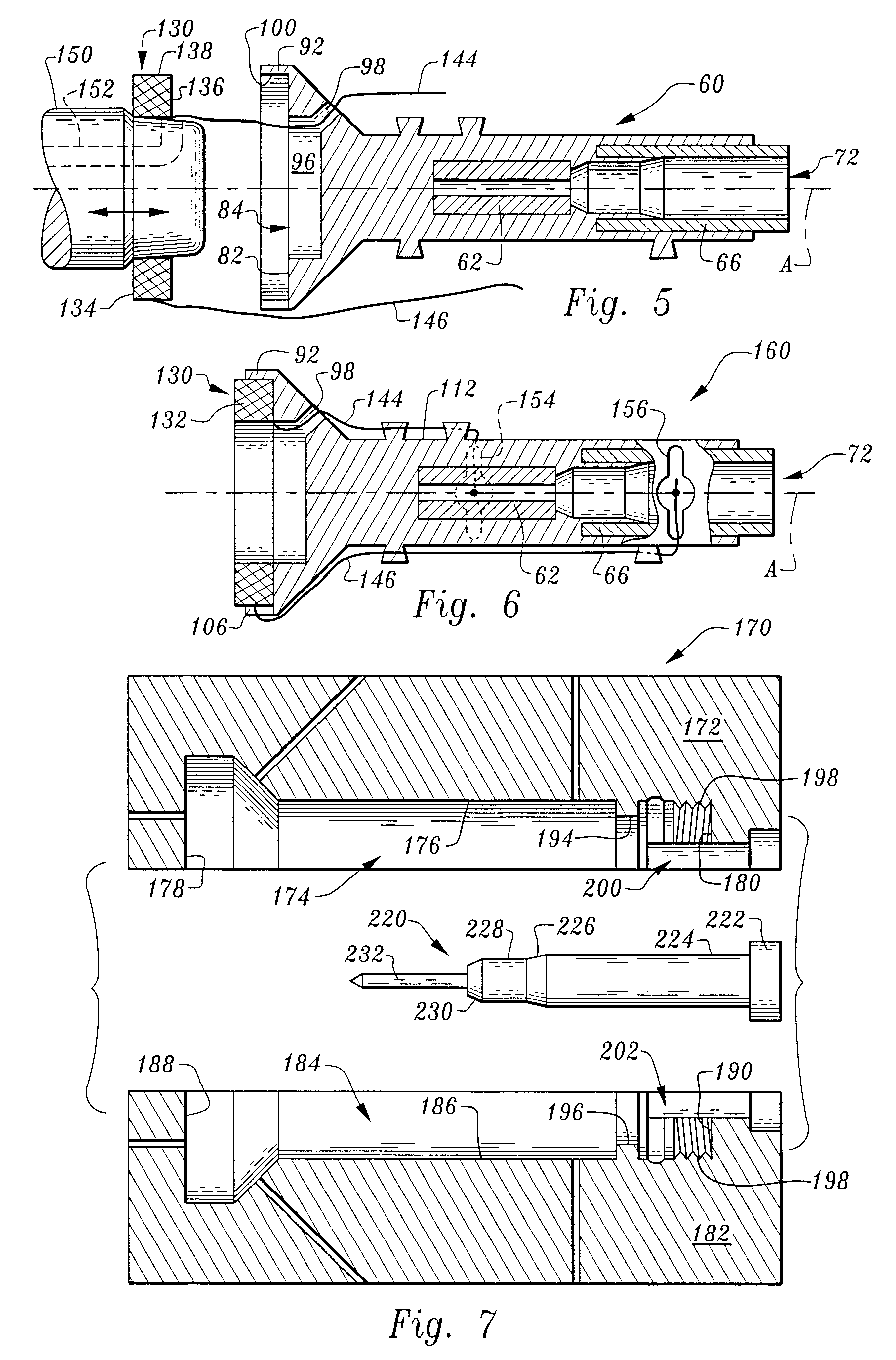Method of making a proximity probe
a proximity probe and probe body technology, applied in the field of making proximity probes, can solve the problems of difficult replacement, deterioration of the probe, and the need for precision operation of the proximity probe, and achieve the effect of eliminating costly machining of the internal thread
- Summary
- Abstract
- Description
- Claims
- Application Information
AI Technical Summary
Benefits of technology
Problems solved by technology
Method used
Image
Examples
Embodiment Construction
Considering the drawings, wherein like reference numerals denote like parts throughout the various drawing figures, reference numeral 10 is directed to the encapsulated proximity probe pursuant to the present invention.
In its essence, and referring to FIG. 1, the proximity probe 10 pursuant to the present invention is comprised of an elongated encapsulated probe tip 20 having a sensing coil 130 disposed proximate a front end 22 and a cable 240 emanating from a back end 24. The elongated encapsulated probe tip 20 includes a longitudinal axis "A" and is comprised of a monolith of cured moldable material defining an encapsulation 30 ensconcing the coil 130 and a preform 60. The elongated encapsulated probe tip 20 is manufactured by first forming the preform 60. The coil 130 is then attached to the preform 60 and tuned. Once tuned, the coil 130 is permanently and electrically connected to the preform thereby completing the formation of a coil and preform assembly 160 (please see FIG. 6)...
PUM
| Property | Measurement | Unit |
|---|---|---|
| angle | aaaaa | aaaaa |
| electrical characteristics | aaaaa | aaaaa |
| moldable | aaaaa | aaaaa |
Abstract
Description
Claims
Application Information
 Login to View More
Login to View More - R&D
- Intellectual Property
- Life Sciences
- Materials
- Tech Scout
- Unparalleled Data Quality
- Higher Quality Content
- 60% Fewer Hallucinations
Browse by: Latest US Patents, China's latest patents, Technical Efficacy Thesaurus, Application Domain, Technology Topic, Popular Technical Reports.
© 2025 PatSnap. All rights reserved.Legal|Privacy policy|Modern Slavery Act Transparency Statement|Sitemap|About US| Contact US: help@patsnap.com



